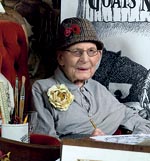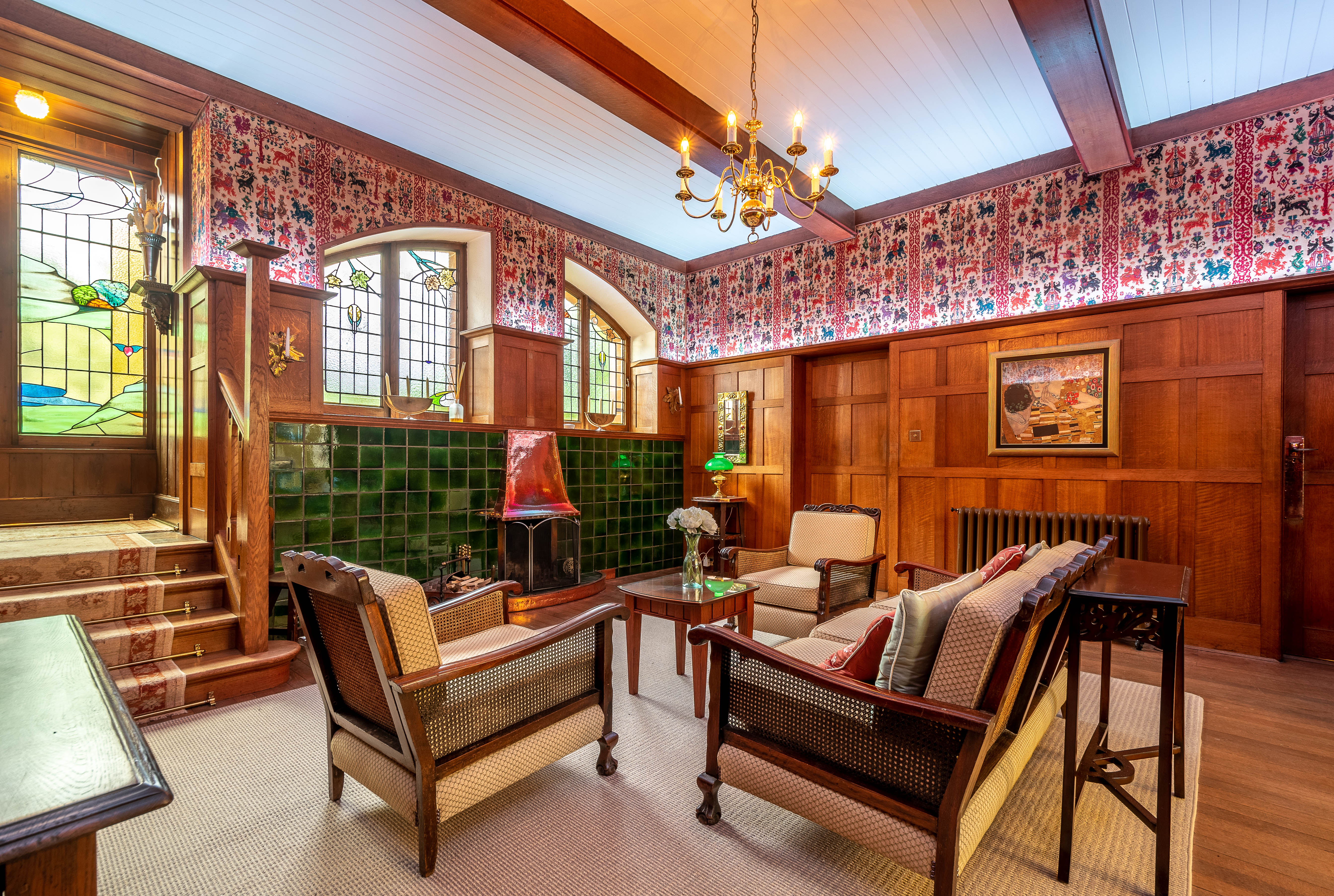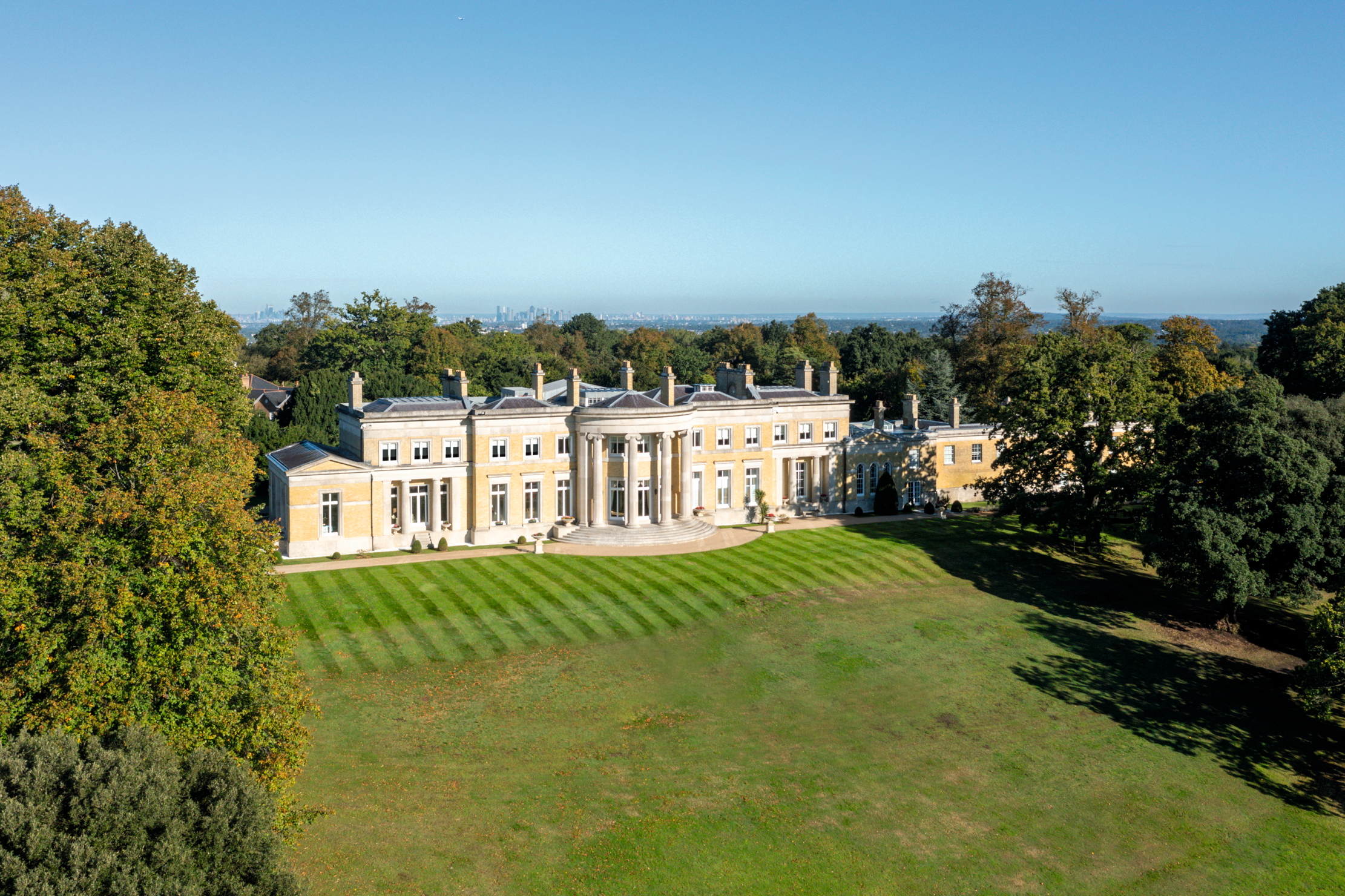Interview: Stanley Lewis
Former solider and war artist Stanley Lewis who, at 102 years old, is writing his memoirs. He tells Jeremy Musson how his old house in Carmarthenshire is still his inspiration


Stanley Lewis, artist, illustrator, teacher and 102 years old has a perfect recall of how the outbreak of the First World War affected his family. 'I was born at White Hall Farm in Monmouthshire; farms were isolated units and it was my whole world. I would sit on the plough horse, Bowler, with Jim Miles, the ploughman, who was like my second father. 'One day, my father told us that we were at war, and told Jim, a reservist who had fought in Afghanistan, that his name was on a list on the church door and he was to report to Newport. Army vets came and took our two best horses. We never heard anything of Jim, until one day at the end of the war, he came home. Someone asked him what he had done and he said simply: "I kept me head down".' Even Bowler returned. When Stanley called out to him, the horse whinnied in recognition.
'I was always sketching. My mother had many books and I pored over their illustrations.' His mother got him into an architect's office. 'It was a disaster, so I applied to Newport School of Art, and after that went to the Royal College of Art, in 1926. Sir William Rothenstein was the head and helped me a lot. I spent a lot of time drawing in the British Museum, which inspired my ambition to be a dedicated artist. All present-day art students should go there to study.' In 1930, he became the painting master at Newport School of Art, and caused a stir by marrying one of his students, Min Wright. They were a legendary partnership in South Wales his wife was one of Caitlin Thomas's closest friends, and wrote a weekly children's story in the South Wales Evening Post which Mr Lewis illustrated.
In the Second World War, Mr Lewis served in the army, and found his artistic skills were called on for posters and portraits of men to send home. He and two others were left out of a posting, despite their protests. 'The regiment was shipped out to Singapore, which had fallen by the time it arrived, and my friends were sent to prisoner-of-war camps to work on the railways.' Mr Lewis ended up as a documents clerk at an army base near Retford: 'The RSM loved having well-educated men around him; another clerk was a Cambridge Professor of Classics who spoke to his friends on the telephone in Latin.' 'I was commissioned by The Fleet Air arm to commemorate the bombing of the battleship Tirpitz in an oil painting. 'Bomber' Harris came to see me at work on it. We had an interesting conversation about his favorite artist, Goya. The previous night, he had had to send young, brave airmen to their deaths, and now here he was analysing my painting and discussing art. Sir Arthur was a great, honourable man whose bombing campaign played a vital part in the defeat of Hitler's Germany.'
After the war, he returned to teach at Newport, and then became the principal of the new art school at Carmarthen. 'My late wife and I purchased Orchard House, a beautiful Georgian house in Llanstephan in Carmarthenshire, in the early 1950s. This was one of the happiest times of my life, and I lived there with Min and my three young children. I painted and sketched to my heart's content, recording everything around me; I dug the garden, grew fruit and vegetables, and kept cows for milk. We were surrounded by the most romantic landscape. Even now, I dream of Llan-stephan and my old home. It was a harvest of inspiration.'
Mr Lewis now lives in a large studio in the house of his daughter, Jennifer Heywood, in a village on the edge of Saddleworth Moor in Yorkshire. It is crammed with drawings and oil paintings. Mr Lewis still draws every day and has recently published two books (a reprint of his wife's Laugharne and Dylan Thomas and Adventures in Animal Town, a collection of their children's stories). He is also writing his memoirs, which, with more than a century to relate, is quite a job.
Sign up for the Country Life Newsletter
Exquisite houses, the beauty of Nature, and how to get the most from your life, straight to your inbox.
Country Life is unlike any other magazine: the only glossy weekly on the newsstand and the only magazine that has been guest-edited by HRH The King not once, but twice. It is a celebration of modern rural life and all its diverse joys and pleasures — that was first published in Queen Victoria's Diamond Jubilee year. Our eclectic mixture of witty and informative content — from the most up-to-date property news and commentary and a coveted glimpse inside some of the UK's best houses and gardens, to gardening, the arts and interior design, written by experts in their field — still cannot be found in print or online, anywhere else.
-
 Seven of the UK’s best Arts and Crafts buildings — and you can stay in all of them
Seven of the UK’s best Arts and Crafts buildings — and you can stay in all of themThe Arts and Crafts movement was an international design trend with roots in the UK — and lots of buildings built and decorated in the style have since been turned into hotels.
By Ben West
-
 A Grecian masterpiece that might be one of the nation's finest homes comes up for sale in Kent
A Grecian masterpiece that might be one of the nation's finest homes comes up for sale in KentGrade I-listed Holwood House sits in 40 acres of private parkland just 15 miles from central London. It is spectacular.
By Penny Churchill